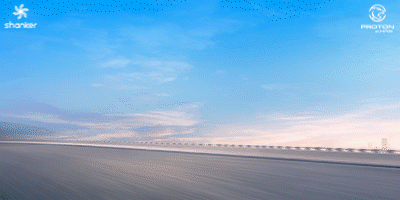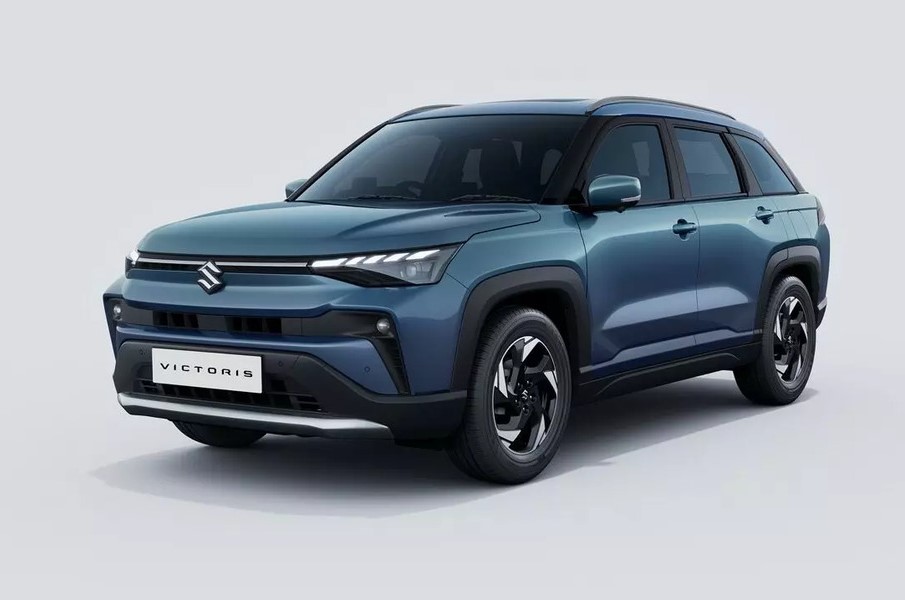TechLekh Verdict
Bajaj Pulsar NS 160 Dual-ABS FI has undergone significant updates and improvements in its BS6 iteration.
The updated BS6-compliant engine, refined performance, improved braking, and enhanced suspension make for a compelling package for riders seeking a sporty and muscular streetfighter.
Bajaj Pulsar NS 160 retains the iconic NS series characteristics while successfully addressing a few shortcomings of the older generation.
It is a good value-for-money option for those who love rev-happy performance and naked sport styling expected from the NS DNA.
Pros
- Sporty Graphics with Aggressive Decals
- Boosted Performance with New and Refined BS6-Compliant FI Engine
- Dual-Disc Braking with Dual-Channel ABS
- 33mm Enduro Up-Side-Down Fork Tuned for Comfort
- Brings NS 200 Riding Characteristics to 160cc Segment
Cons
- No LED Headlight and LED Indicators
- Pillion Discomfort on Long Rides
- Unnecessary Cost-Cutting on Meter Illumination
This is a detailed review of the new Bajaj Pulsar NS 160.
Bajaj Pulsar NS 160 has had a rough beginning.
The company initially introduced it as an affordable alternative to the NS 200 in 2017. While the sales number wasn’t as strong as the NS 200, it somehow managed to survive.
However, things took a turn when Bajaj introduced its brand-new Bajaj Pulsar N160.
Suddenly, there was an identity crisis for the NS 160.
Where does the Pulsar NS 160 belong in the Pulsar lineup?
Perhaps after that realization, Bajaj Auto isn’t holding back on updates for the new Bajaj Pulsar NS 160 Dual-ABS BS6.
It gets the same updated setup as the Pulsar NS 200.
There is a bit of cost-cutting here and there, but comparatively less than before.
This is the updated Pulsar NS 160 we all have been waiting for. And, it brings a lot to the table for just Rs. 3.84 Lakhs!
Can the new Bajaj Pulsar NS 160 prove itself as a better value? And, will it live up to its “Sharper than Ever” nametag?
This is the Bajaj Pulsar NS 160 Full Review!
Bajaj Pulsar NS 160 Specifications
- Engine Type: Single-Cylinder, 4 Stroke, SOHC 4-Valve, Twin Spark DTS-i engine
- Emission Standard: BS6
- Displacement: 160.3 cc
- Cooling System: Oil Cooled
- Starting Mechanism: Self Starter and Kick Start
- Max Power: 17.2 PS @ 9000 rpm
- Max Torque: 14.6 Nm @ 7250 rpm
- Gearbox: 5-Speed
- Top Speed: 118 Kmph
- Fuel Tank Capacity: 12 liter
- Mileage: 40 kmpl
- Front Tyre: Disc
- 100/80-17
- Rear Tyre: Disc
- 130/70-17
- Tubeless Tyres: Yes
- Braking System: Dual-Channel ABS
- Suspension Setup: 33mm USD Telescopic Fork and Nitrox Mono Shock Absorber with Canister
- Seat Height: 805 mm
- Ground Clearance: 170 mm
- Kerb Weight: 152 kg
- Colors: Ebony Black and Metallic Pearl White
Bajaj Pulsar NS 160 Price in Nepal: Rs. 3,84,900 (Dual-ABS)
Bajaj Pulsar NS 160 Overview
Muscular Design
Bajaj Pulsar NS 160 comes with the same iconic design.
The aggressive stance goes well with its muscular fuel tank and naked streetfighter styling.
There is no change in its iconic elements. It gets the same aggressive headlamp design, stylized alloy wheels, an engine cowl, underbelly exhaust, and attractive graphic offerings.
Moreover, the split seat setup and the iconic Bajaj LED tail lamp remain unchanged.
However, Bajaj has done a graphics overhaul.

Bajaj has removed the ugly white-colored alloys and white-colored perimeter frame. Instead, it gets a silver-satin finish that ultimately improves its appeal.
This brings back the OG Pulsar NS vibes.
Thanks to the newer color scheme, it re-establishes itself as the most aggressive and muscular street fighter.
It is a bit more sophisticated, especially with black chrome touches and greyish carbon fiber finishing.
The “Pulsar” branding and “Fuel Tank Cap” get a blacked-out treatment.
Furthermore, the profile is sleeker than ever thanks to its wider tyres, a chunkier front fork, and a larger disc size.
LED Headlight and LED Indicators are still missing.
The build and finish are satisfactory for the 160cc segment.

There are two paint schemes available: Matte Pearl Metallic White and Glossy Ebony Black.
BS6-Compliant Performance
Bajaj Pulsar NS 160 is powered by a 160.3cc 4-valve, Oil-Cooled, and Twin-Spark DTS-I FI engine. It generates a max power of 17.2 PS at 9000 rpm and a max torque of 14.6Nm at 7250 rpm.
Moreover, it is mated to a 5-speed gearbox with a 12-liter fuel tank capacity.

This is finally BS6-compliant!
Hence, it now gets a Fuel Injection with the side-stand engine cut off as standard.
There is no change in the overall engine configuration. Even, the kickstart is still there!
It is still a 4-Valve Oil-Cooled DTS-I setup. Yet, the NS 160 FI generates 1.8 PS more power than before by shifting from the Carburetor to FI.
Thanks to the bump, you do notice improved top-end performance.
Meaning, the highway riding is marginally better, but the torque accessibility is still limited to the higher revs.
Vibrations have toned down a bit… but it is still there. Also, the exhaust note gets a minor rework.
Additional Details
The dimensions are 2017 mm in length, 804 mm in width, and 1060 mm in height. Moreover, the wheelbase is 1372mm.
There is no change in overall dimensions.
Bajaj Pulsar NS 160 still gets a 170mm ground clearance. However, the kerb weight has been increased to 152kg in the BS6 iteration.
It gets a Steel Perimeter Frame with a Box Section Swingarm.
Loaded Features
After lacking in features for years, the Bajaj Auto doesn’t hold back for this.
This is a significant update for the Bajaj Pulsar NS 160. It brings new quality-of-life improvements including in its braking, suspension, and ride quality.
How good is the new NS 160? Let’s find out!
Braking Performance
There is a considerable improvement in the braking performance.
Bajaj Pulsar NS 160 comes with Dual-Disc Braking with Dual-Channel ABS as standard.
As of this writing, only Pulsar NS 160 and Pulsar N160 offer Dual-Channel ABS in the 160cc segment.

Moreover, it replaces ByBre with new Grimeca calipers.
On top of that, the Front Disc size has been increased to 300mm whereas the Rear Disc remains the same at 230mm.
There is considerable improvement in braking performance.
Like before, the front brake is bite-heavy and the rear brake lacks a certain punch. Nevertheless, it feels more confident and more reliable than before.
If Bajaj had tuned the rear brake a bit more on the heavier side, it would have been a home run!
Tyres
Bajaj has opted to increase the tyres for the third time.
This time around it brings the same tyre as seen in the newer N Series. That’s right, N250, N160, NS 200, and NS 160 all share the same tyre profile.
This is a kilo lighter than the previous gen tyres.

Thanks to the newer and wider profile, the rideability around corners feels much improved. Moreover, the rear traction is also better than before.
It would have been nice if Bajaj had included a radial tyre with this update. Nevertheless, the “lack of radial” can be considered as an understandable cost-cutting.
Hopefully, Bajaj will tackle it in the next update.
Suspension
Let’s talk about a major upgrade: Suspension.
Bajaj has upgraded the older Telescopic Fork with a newer 33mm Enduro Upside-Down Setup. Whereas, the rear suspension is still the familiar Gas-Charged Mono-Shock.

There is a noticeable difference between the newer and older gen setup.
USD Forks usually feel stiff around the speed breakers and plotholes. However, that is not the case here.
Bajaj has perfected the setup by leaning more toward the softer side.
The front setup has been crafted to provide a smoother and more comfortable ride. Whereas, the rear setup falls on the stiffer in comparison.
The front and rear suspension join forces to create a well-balanced machine. The suspension is fully capable of handling any road challenges.
Whether you’re navigating through rough terrain or cruising down the highway, the ride will be smooth and effortless.
Seat Comfort and Pillion
Bajaj Pulsar NS160 gets the familiar split-seat setup.
The rider’s seating position is upright and comfortable, being in complete control, even if a heavy pillion joins in.
It continues to maintain a stress-free riding posture for a longer period.

However, the same cannot be said about the pillion.
The pillion comfort will continue to decrease as the ride progresses.
If you are planning to go with the pillion on a long ride, then breaks between the ride is recommended.
Fuel Tank Capacity and Mileage
Bajaj Pulsar NS 160 gets a 12-liter Fuel Tank Capacity.
After real-world testing, we managed to get around 38-42 Kmpl. Riders can achieve around 45 Kmpl with more economical riding.
It should give 456-504 km on a full tank.
Upgraded Analog-Digital Meter
Bajaj is known for its iconic Analog-Digital Meter design.
That continues to be the case for the NS 160. Except now, it shows much more practical information to the rider.

It provides additional information like Gear Position Indicator, Distance to Empty, Average Fuel Economy, and Real-Time Fuel Mileage.
I know this isn’t the all-digital meter upgrade we all were expecting. Nevertheless, it looks nice and gets the job done!
It still misses out on Bluetooth Connectivity.
Bajaj Pulsar NS 160 Feature Highlights
- Twin-Spark 160cc DTS-I Engine
- BS6-Compliant Fuel Injection
- Sporty Naked Sports Design
- Halogen Headlamp and LED Tail Lamp
- Updated Analog Digital Instrument Cluster
- USD Telescopic Front Forks with Nitrox Rear Monoshock
- Dual Disc Brakes
- Dual-Channel ABS
- Wider Tubeless Alloy Wheels
- Perimeter Frame
- Under Belly Exhaust
- Engine Cowl
- Clip-On Handlebars
My Experience with Bajaj Pulsar NS 160
Improved Performance
With the shift to the BS6 update, the NS 160 performance is even more accessible.
The riders can achieve a usable powertrain between 5000rpm-6000rpm. However, riders must rev the engine past 7000rpm to feel the raw NS performance.
When you do take the engine past that 7000 rev range, you will notice a few interesting things.
There is a minor improvement in the top-end acceleration due to a 1.8PS bump in power. However, the torque output is still linear.
Like before, there is a small delay in pick-up when you pull on the throttle.
One reason why Pulsar NS riders rev their throttle is to get the maximum torque and pickup from their bike.
It is a hallmark of the Pulsar NS engine. Although it can be enjoyable and exciting for many, some may not prefer it.
The vibrations are still there at the higher revs, noticeable around the levers and tank. However, it has been toned down compared to the older NS 160s.
Signature NS Handling
I am happy to report that the signature NS handling is unchanged.
It takes the familiar NS 160 packaging but takes it a step further by combining with its perimeter frame, refined engine, wider tyres, and improved braking setup.
It is a super fun bike to ride in the city.
While the highway performance isn’t that impressive, the tall gear ratios help make the experience a bit more pleasant.
I didn’t encounter any issues with the 5-speed gearbox.
It is balanced enough for the 160cc engine. The first gear is short, but the rest are tall and well-balanced.
There isn’t much performance difference with each gear increment.
Each gear shift is crucial in enhancing the engine’s smoothness by significantly reducing vibrations and promoting seamless cruising speeds.
These all work together to offer a good sporty commuter.
Shortcomings
The NS 160 gets an orange-lit meter, in the spirit of cutting costs, which is completely justifiable.
Being a 160cc segment, cost-cutting is expected. My concern lies in the way it has been implemented.
If you turn the key to the motorcycle, the meter light only briefly lights up.
There is no visible illumination in the headlamp or pilot lamps or meter. The rider must turn the engine on for illumination.
This is an unnecessary inconvenience, present in both NS160 and N160.
Imagine if you have to make frequent stops at a place with no street lamps. It seems unnecessary to turn on the engine everytime you need some sort of illumination.
Hopefully, Bajaj does better implementation in the future.
Battle with the Competition
The new update has ignited a strong rivalry between the Pulsar siblings!
Bajaj Pulsar NS 160 vs Bajaj Pulsar N160: Which is a Better Buy?
I admire both Pulsars.
Having ridden both the NS 160 and N160, both Pulsars are quite fun and offer a better-value-for-money proposition.
If I had to choose between the two, I would personally lean toward the Bajaj Pulsar N160 more.
Pulsar N160 is a modern Pulsar between the two, offering a new engine on a new platform. Moreover, the wider torque band makes pickup more accessible which ultimately makes city commutes fun!
However, it lacks the precision-cut handling and rev-happy nature offered in the Pulsar NS 160.
Pulsar N160 is a better package, but the Pulsar NS 160 is more iconic.
If you want something modern, an instant torque feel, and a refined engine, then choose the Bajaj Pulsar N160. Else, if you love the trademark NS DNA that revs its heart out, then choose Bajaj Pulsar NS 160.
Conclusion
Bajaj Pulsar NS 160 is no longer an afterthought, but a fully-determined 160cc street fighter.
It proves itself as a better value through its upgraded offering in performance, style, and features.
Pulsar NS 160 rightfully earns all the love and attention. It is ready to conquer every mile of the big road ahead by being a sharper than ever before.
This is the Full Review of the all-new Bajaj Pulsar NS 160 BS6 FI.
-
TechLekh Awards: Best Cars of 2025 in Nepal Winners!Electric vehicles continue to dominate Nepal’s market in 2025, and Chinese manufacturers still lead the…
-
Suzuki Victoris Nears Launch in Nepal: Easy to Live With, Harder to Get Excited AboutHIGHLIGHTS Suzuki Victoris price in Nepal is expected to be between Rs. 50–60 Lakhs. It…
-
Nothing New Year 2026 Offer: Free Headphones, Watch, Buds & More on Select PhonesHIGHLIGHTS Nothing is offering free accessories on the purchase of select Nothing and CMF smartphones.…





















